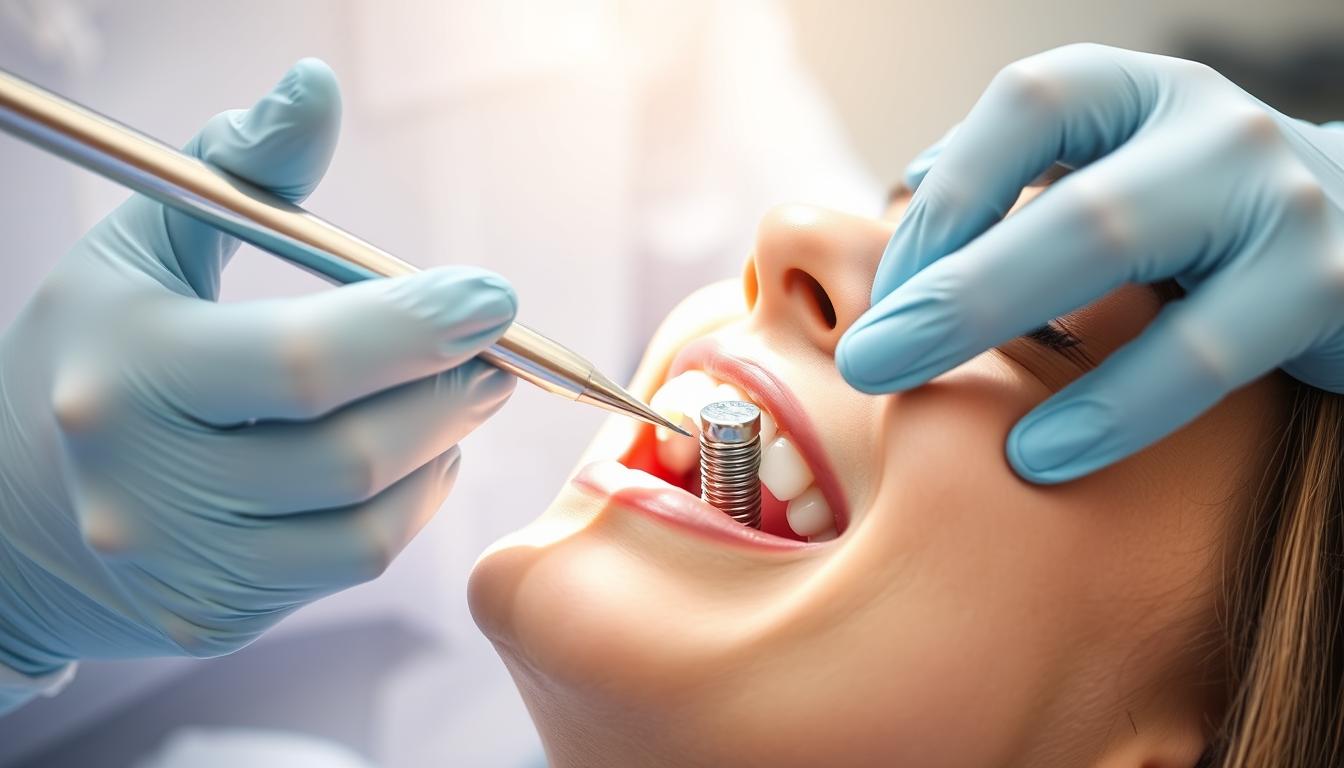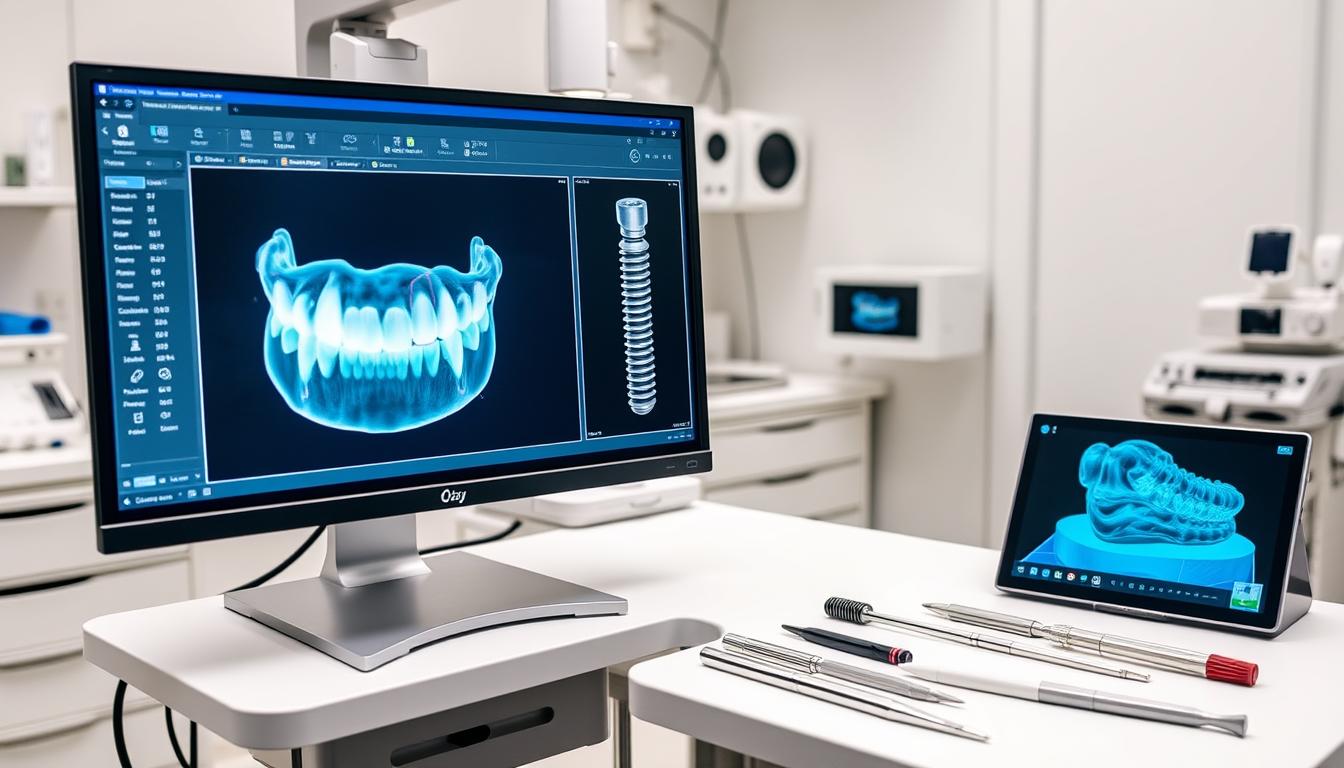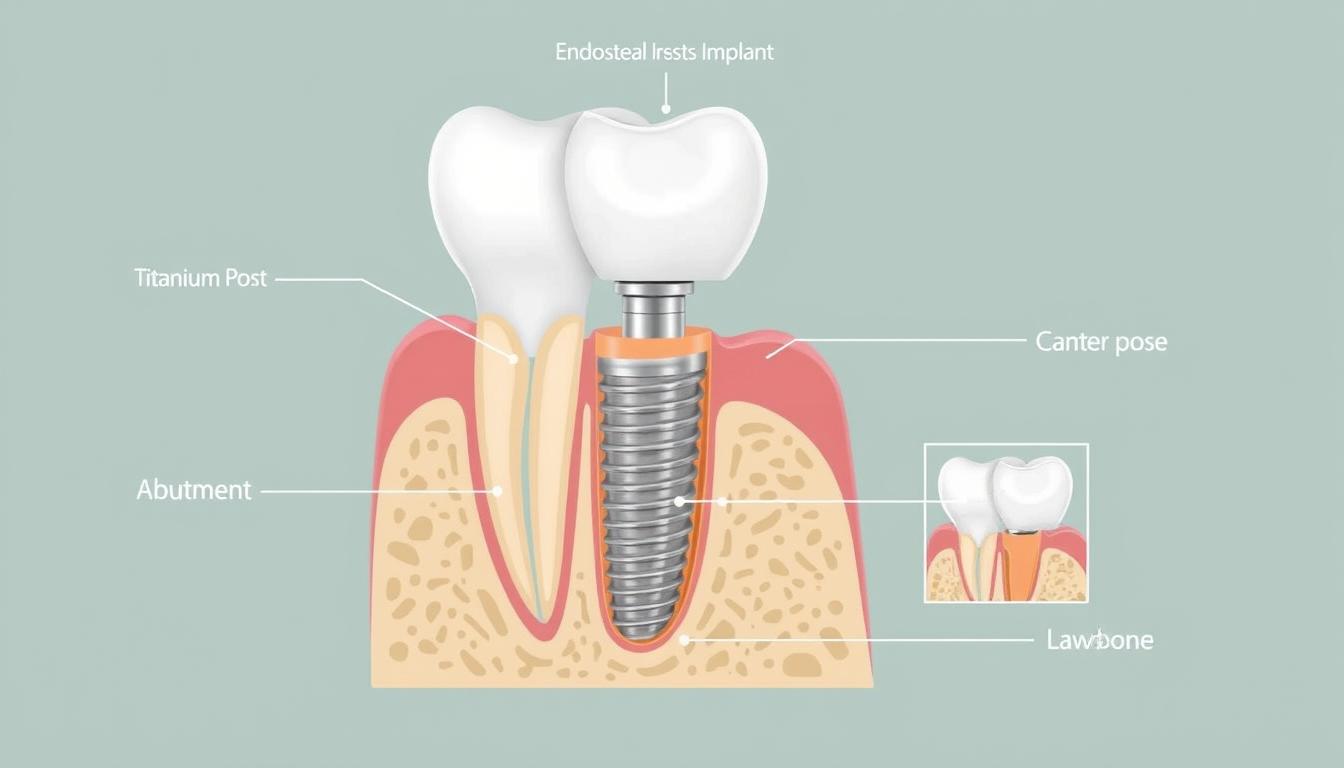Missing teeth can significantly impact your quality of life, affecting everything from your confidence to your ability to eat comfortably. Endosteal implants offer a long-lasting solution that looks and functions like natural teeth. As the most common type of dental implant, these titanium posts are placed directly into the jawbone, creating a sturdy foundation for replacement teeth that can last a lifetime with proper care.
This comprehensive guide explores everything you need to know about endosteal implants, from the procedure itself to candidacy requirements and long-term maintenance. Whether you’re just beginning your research or preparing for an upcoming procedure, this information will help you make informed decisions about your dental health.Subperiosteal implants
What Are Endosteal Implants?
Anatomical view of an endosteal implant showing placement in the jawbone
Endosteal implants are dental prosthetics that serve as artificial tooth roots. The term “endosteal” comes from Greek, meaning “within bone.” These implants are surgically placed directly into the jawbone, where they integrate with the bone tissue through a process called osseointegration. This creates a strong, stable foundation for attaching replacement teeth.
Typically made of biocompatible titanium, endosteal implants are shaped like small screws, cylinders, or blades. Their design allows them to mimic the function of natural tooth roots, providing support for crowns, bridges, or dentures while stimulating the jawbone to prevent bone loss that normally occurs after tooth loss.
Purpose of Endosteal Implants in Modern Dentistry
Endosteal implants have revolutionized restorative dentistry by offering a solution that addresses both the functional and aesthetic aspects of tooth replacement. Their primary purposes include:
- Replacing one or more missing teeth without affecting adjacent healthy teeth
- Preserving jawbone density and preventing facial structure changes
- Restoring proper chewing function and speech clarity
- Providing a permanent solution that eliminates the inconvenience of removable dentures
- Improving overall oral health by preventing shifting of remaining teeth
Unlike traditional bridges that require grinding down adjacent healthy teeth, endosteal implants stand alone, preserving more of your natural dental structure. They also stimulate bone growth through natural chewing forces, maintaining jawbone health in ways that conventional dentures cannot.
Comparing Endosteal Implants with Other Types

While endosteal implants are the most common type used in modern dentistry, they’re not the only option available. Understanding the differences between implant types can help you determine which might be best suited for your specific needs.
| Implant Type | Placement | Ideal Candidates | Advantages | Considerations |
| Endosteal | Directly into jawbone | Patients with adequate bone density | High success rate, natural feel, preserves bone | Requires sufficient bone volume |
| Subperiosteal | On top of jawbone, under gum tissue | Patients with insufficient bone height | Avoids bone grafting, shorter treatment time | Less stable, higher failure rate |
| Zygomatic | Anchored in cheekbone (zygoma) | Severe upper jaw bone loss | Avoids extensive bone grafting | Complex procedure, specialized training required |
| Mini Implants | Directly into jawbone (smaller diameter) | Limited space or bone width | Less invasive, often lower cost | May not support all restoration types |
Why Endosteal Implants Are Most Common
Endosteal implants have become the standard in implant dentistry for several compelling reasons:
- Superior stability due to direct bone integration
- Documented long-term success rates exceeding 95% in healthy patients
- Versatility in supporting various prosthetic options (single crowns, bridges, full dentures)
- Predictable outcomes with well-established surgical protocols
- Effective stimulation of bone tissue, preventing atrophy
While alternative implant types serve important roles for specific patient needs, endosteal implants remain the preferred choice when anatomical conditions permit their placement.
The Endosteal Implant Procedure

The endosteal implant procedure typically involves several stages spread over a few months. This methodical approach ensures proper healing and integration at each step, maximizing the long-term success of your implant.
Initial Consultation and Planning
Before any surgical procedure begins, your dentist will conduct a thorough examination that includes:
- Comprehensive dental examination
- 3D imaging (CT scans) to assess bone quality and quantity
- Review of medical history to identify potential contraindications
- Discussion of treatment goals and expectations
- Development of a customized treatment plan
This planning phase is crucial for identifying the optimal implant position, size, and type, as well as determining whether supplementary procedures like bone grafting might be necessary.
Surgical Placement
The implant placement surgery typically follows these steps:
- Local anesthesia is administered to ensure comfort throughout the procedure.
- A small incision is made in the gum tissue to expose the jawbone.
- A precision drill creates a carefully sized channel in the bone.
- The titanium implant is inserted into the prepared site.
- A healing cap may be placed, and the gum tissue is sutured around or over the implant.
Many patients are surprised by how comfortable this procedure can be. Most report that endosteal implant placement is less painful than tooth extraction, with minimal post-operative discomfort that can typically be managed with over-the-counter pain medications.
Ready to Explore Your Implant Options?
Our specialists can help determine if endosteal implants are right for you. Schedule a complimentary consultation to discuss your specific needs and get personalized recommendations.Schedule a Free Consultation
Osseointegration: The Healing Process

Osseointegration is the biological process where the jawbone fuses with the titanium implant surface. This critical phase:
- Typically takes 2-6 months depending on individual healing factors
- Creates a strong bond between implant and bone that mimics natural tooth roots
- Requires patience but ensures long-term implant stability
- May be monitored with periodic X-rays to confirm progress
During this healing period, patients usually wear a temporary prosthetic to maintain appearance and some function. It’s important to follow dietary guidelines during this phase, typically avoiding very hard or chewy foods that could disrupt the healing process.
Abutment Placement and Final Restoration
Once osseointegration is complete, the final phases of the procedure include:
- A minor procedure to expose the implant if it was covered by gum tissue
- Attachment of an abutment—the connector piece between implant and crown
- Taking impressions for fabrication of the final restoration
- Placement and adjustment of the custom-made crown, bridge, or denture
The entire process from initial implant placement to final restoration typically takes 3-9 months. While this may seem lengthy, the result is a restoration that can last decades with proper care—making endosteal implants a truly long-term solution for tooth replacement.
Ideal Candidates for Endosteal Implants

While endosteal implants offer excellent outcomes for many patients, they’re not universally suitable for everyone. Understanding the factors that make an ideal candidate can help set realistic expectations about this treatment option.
Key Requirements for Endosteal Implant Candidates
Favorable Factors
- Adequate jawbone density and volume
- Good overall health and immune function
- Healthy gum tissue free of periodontal disease
- Commitment to excellent oral hygiene
- Non-smoker status (or willingness to quit)
- Fully developed jawbone (typically age 18+)
Potential Contraindications
- Severe bone loss without grafting
- Uncontrolled diabetes or autoimmune disorders
- Active periodontal disease
- Heavy tobacco use
- Certain medications (e.g., high-dose bisphosphonates)
- Radiation therapy to the jaw area
It’s important to note that many initial contraindications can be addressed with proper treatment. For example, bone grafting can build up insufficient jawbone, and periodontal therapy can resolve gum disease, potentially making implants viable later.
Evaluating Bone Quality and Quantity
Sufficient bone structure is perhaps the most critical factor for endosteal implant success. Your dentist will evaluate:
- Bone height: Must be sufficient to accommodate the implant length
- Bone width: Needs to surround the implant diameter with at least 1mm of bone on all sides
- Bone density: Determines how well the implant will integrate and support force
- Proximity to anatomical structures like nerves and sinuses
Advanced 3D imaging techniques allow for precise measurement of these factors, helping to determine whether an endosteal implant is appropriate or if alternative approaches should be considered.
Not an ideal candidate for endosteal implants? Don’t worry—alternatives like subperiosteal implants, mini implants, or traditional bridges may still provide excellent tooth replacement options. A qualified implant specialist can help determine the best approach for your specific situation.
Long-Term Success Rates and Maintenance

Endosteal implants boast impressive long-term success rates, but their longevity depends significantly on proper maintenance and care. Understanding both the statistical outlook and required maintenance can help you maximize your investment in dental implants.
Success Rate Statistics
95%
Average 10-Year Success Rate
Non-smokers
98%
Smokers
85%
Front Teeth
97%
Molars
93%
According to the American Dental Association and multiple long-term studies, endosteal implants have a success rate of approximately 95% over a 10-year period. This remarkable durability exceeds most other dental restorations, with many implants lasting a lifetime when properly maintained.
Factors that influence success rates include:
- Patient health factors (diabetes control, smoking status)
- Implant location (anterior vs. posterior)
- Bone quality at the implant site
- Surgeon experience and technique
- Patient compliance with maintenance protocols
Maintenance Requirements
While endosteal implants cannot develop cavities, they still require diligent care to prevent complications like peri-implantitis (inflammation around the implant). Proper maintenance includes:
Daily Care
- Brushing twice daily with a soft-bristled toothbrush
- Flossing around implants with implant-specific floss or floss threaders
- Using a water flosser for difficult-to-reach areas
- Avoiding tobacco products completely
Professional Care
- Regular dental check-ups every 6 months
- Professional cleanings with implant-specific instruments
- Periodic radiographs to assess bone levels
- Prompt attention to any signs of inflammation
Want to Learn More About Caring for Dental Implants?
Download our comprehensive guide to endosteal implant care and maintenance. Get expert tips for ensuring your investment lasts a lifetime.Download Free Implant Care Guide
Latest Advancements in Endosteal Implant Technology

The field of implant dentistry continues to evolve rapidly, with new materials, techniques, and technologies improving outcomes and expanding treatment possibilities. These advancements are making endosteal implants more accessible, comfortable, and successful than ever before.
Material Innovations
While traditional titanium remains the gold standard for endosteal implants, several material advancements have emerged:
- Titanium Alloys: Enhanced formulations with improved strength-to-weight ratios and osseointegration properties
- Zirconia Implants: Metal-free alternatives offering excellent biocompatibility and aesthetic advantages, especially for patients with thin gum tissue
- Surface Treatments: Specialized coatings and texturing that accelerate osseointegration and improve success rates
- Antimicrobial Surfaces: Experimental coatings designed to reduce infection risk during healing
Digital Workflow and Guided Surgery

Digital technologies have revolutionized the planning and placement of endosteal implants:
- CBCT Imaging: Three-dimensional scans providing precise visualization of bone anatomy
- Digital Implant Planning: Software that allows virtual placement and optimization before surgery
- 3D-Printed Surgical Guides: Custom templates ensuring precise implant positioning
- Dynamic Navigation: Real-time guidance systems similar to GPS for implant placement
- Digital Impressions: Intraoral scanners creating precise digital models without traditional impression materials
These digital workflows not only improve accuracy but often reduce treatment time and patient discomfort compared to traditional methods.
Accelerated Treatment Protocols
Innovations in surgical techniques and implant design have led to protocols that can significantly reduce treatment time:
- Immediate Loading: Placement of provisional restorations at the time of implant surgery in suitable cases
- Same-Day Implants: Extraction, implant placement, and provisional restoration in a single appointment
- Growth Factors: Biological materials like PRF (Platelet-Rich Fibrin) that accelerate healing
- Mini-Implants: Smaller diameter implants that may require less invasive surgery in specific situations
While these accelerated protocols aren’t appropriate for every patient, they represent significant advancements in making implant treatment more convenient and accessible.
Frequently Asked Questions About Endosteal Implants

How painful is the endosteal implant procedure?
Most patients report that the endosteal implant procedure is surprisingly comfortable. The surgery is typically performed under local anesthesia, which completely numbs the area. Many dentists also offer sedation options for anxious patients.
Post-operative discomfort is usually mild to moderate and can be managed with over-the-counter pain medications. Most patients return to normal activities within 1-2 days after surgery, though some swelling and tenderness may persist for several days.
How long do endosteal implants last?
With proper care and maintenance, endosteal implants can last a lifetime. Studies show success rates of over 95% at 10 years, with many implants functioning well for 20+ years. The titanium post itself rarely fails once properly integrated with the bone.
The prosthetic crown attached to the implant may need replacement after 10-15 years due to normal wear and tear, similar to other dental restorations. Regular dental check-ups and good oral hygiene significantly contribute to the longevity of both the implant and the restoration.
What is the average cost of an endosteal implant?
The cost of an endosteal implant typically ranges from $3,000 to $5,000 for a single tooth replacement, including the implant, abutment, and crown. Prices vary based on geographic location, dentist experience, materials used, and whether additional procedures like bone grafting are needed.
While dental insurance coverage for implants has improved in recent years, many plans still provide only partial coverage. Many dental practices offer financing options to make this investment more manageable. Despite the upfront cost, endosteal implants often prove more cost-effective in the long run compared to alternatives that may require more frequent replacement.
Can I get an endosteal implant if I’ve had bone loss?
Yes, many patients with some degree of bone loss can still receive endosteal implants after undergoing bone augmentation procedures. Common techniques include:
- Bone grafting: Adding bone material to build up deficient areas
- Sinus lifts: Creating more bone height in the upper jaw
- Ridge expansion: Widening narrow jaw ridges
These preparatory procedures may extend the overall treatment timeline but can make endosteal implants possible for patients who might otherwise not be candidates. In cases of severe bone loss, alternative implant types like subperiosteal or zygomatic implants might be recommended instead.
How do I care for my endosteal implant?
Caring for endosteal implants involves:
- Brushing twice daily with a soft-bristled toothbrush
- Daily flossing around the implant using implant-specific floss or floss threaders
- Using interdental brushes or water flossers to clean hard-to-reach areas
- Regular professional cleanings every 6 months
- Avoiding tobacco products, which significantly increase implant failure risk
- Wearing a night guard if you grind your teeth
While implants cannot develop cavities, they can be affected by gum disease. Maintaining excellent oral hygiene is essential for long-term implant success.
Is an Endosteal Implant Right for You?
Endosteal implants represent the gold standard in tooth replacement, offering unparalleled stability, function, and longevity. Their placement directly in the jawbone creates a foundation that closely mimics natural teeth, providing both aesthetic and functional benefits that can last a lifetime with proper care.
While not every patient is an ideal candidate initially, advances in bone augmentation techniques and implant technology have made this treatment option accessible to more people than ever before. The high success rates and long-term value of endosteal implants make them worth considering for anyone facing tooth loss.
To determine if endosteal implants are right for your specific situation, consult with a qualified implant dentist who can evaluate your oral health, discuss your goals, and recommend the most appropriate treatment plan. With proper planning, skilled surgical placement, and diligent maintenance, endosteal implants can provide decades of comfortable, confident smiling.

